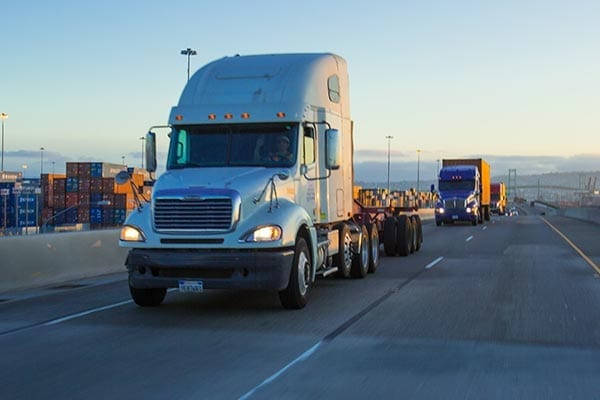The Ports of Los Angeles and Long Beach are the two largest ports in the nation and combined are the ninth-largest port complex in the world. The two ports handle about 40 percent of the nation’s total containerized import traffic and generate more than 3 million jobs nationwide. Although they are the largest source of pollution in the region, they have also become models of environmental stewardship. In an effort to reduce their environmental footprint, the two ports came together 10 years ago to develop the first iteration of their Clean Air Action Plan (CAAP), which looks at all port-related emission sources including ships, trains, cargo-handling equipment, harbor craft, and perhaps most significantly, drayage trucks.
A landmark initiative in the first CAAP was the Clean Trucks Program, which outlined a process to modernize the port trucking fleet by requiring truck owners to replace older polluting trucks with newer cleaner ones. The program introduced a registration process for all trucks entering the ports, a truck ban that required all trucks meet the 2007 federal emissions standard by 2012, and a clean truck fee that charged noncompliant trucks a fee that helped finance new truck replacements. The program, once fully implemented, transformed the drayage fleet servicing the ports and saw truck-related pollution reductions of over 80 percent.
Fast forward 10 years and the twin ports have come together once again to update the CAAP and the Clean Trucks Program. The new program, currently in a draft form and open to public comment, requires that all trucks entering the ports be zero emission by 2035. The plan also includes many of the same elements from the first Clean Trucks Program, such as a clean truck fee, a registry requirement, and a ban based on the State’s truck emissions standards.
The current plan has complaints from both sides of the spectrum. Environmentalists are saying the plan is not aggressive enough in transitioning to zero emissions, while the trucking industry is saying that the plan will incur too high of costs that may ultimately fall on the backs of truck drivers rather than cargo owners.
One thing is for sure: the program will call for more natural gas, clean diesel, and electric-powered trucks. As a result of the first Clean Trucks Program, many natural gas drayage tractors were adopted, which provided immediate emission reductions by replacing older, higher polluting diesel trucks. Today, however, the vehicle technology landscape is much different than it way 10 years ago.
Electric vehicle technology has progressed with demonstrations underway to test the technological feasibility. However, the day when a trucking company can purchase a battery-electric heavy-duty truck that can handle the duty cycle of a port drayage truck is still a distant reality.
Diesel trucks, on the other hand, are the lowest cost option on the market and while there have been slight improvements in their environmental performance, they are still high polluters compared to other available options.
Natural gas trucks have made incredible strides in recent years with new engine technology that is 90 percent cleaner than the current emission standard. This “near-zero” emission technology is available in a 9 liter engine variety, with an equivalent 12 liter version expected in the next year. These trucks provide comparable lifecycle emissions to an electric truck when considering upstream emissions from power plants, and are capable of meeting the duty cycle of a port drayage truck. When fueled with renewable natural gas rather than fossil gas, these trucks achieve an environmental performance better than “zero-emission” electric trucks.
Given the design of the new Clean Trucks Program and the price spread of the current truck market, it is likely that late model diesel trucks will be the vehicle of choice for most drivers to comply with the Clean Trucks Program. Considerable funding and political willpower will be required to see significant numbers of near-zero and zero emission trucks deployed in the SoCal Ports. However, the two ports did it once before, so perhaps they will do it again.


